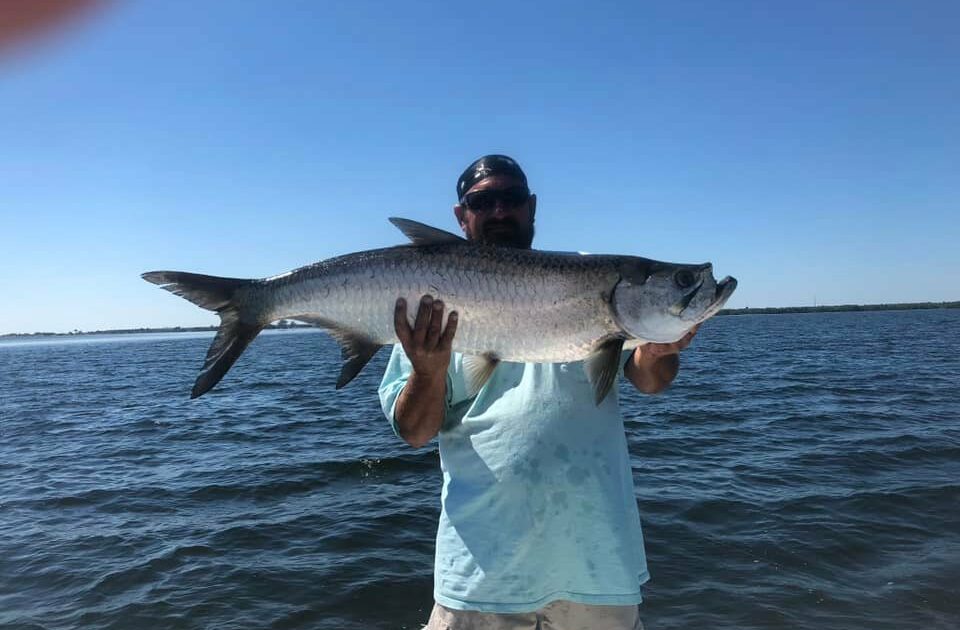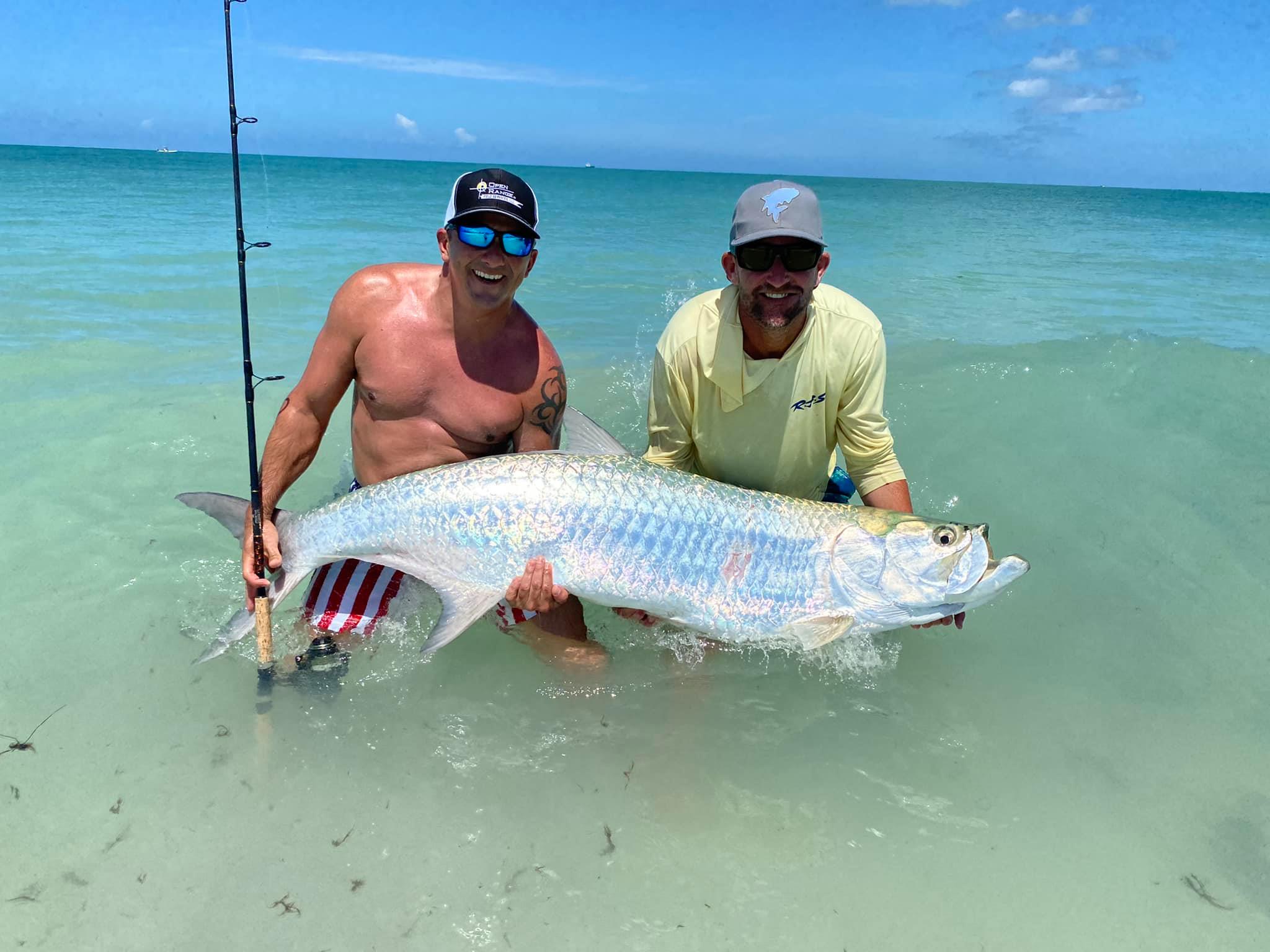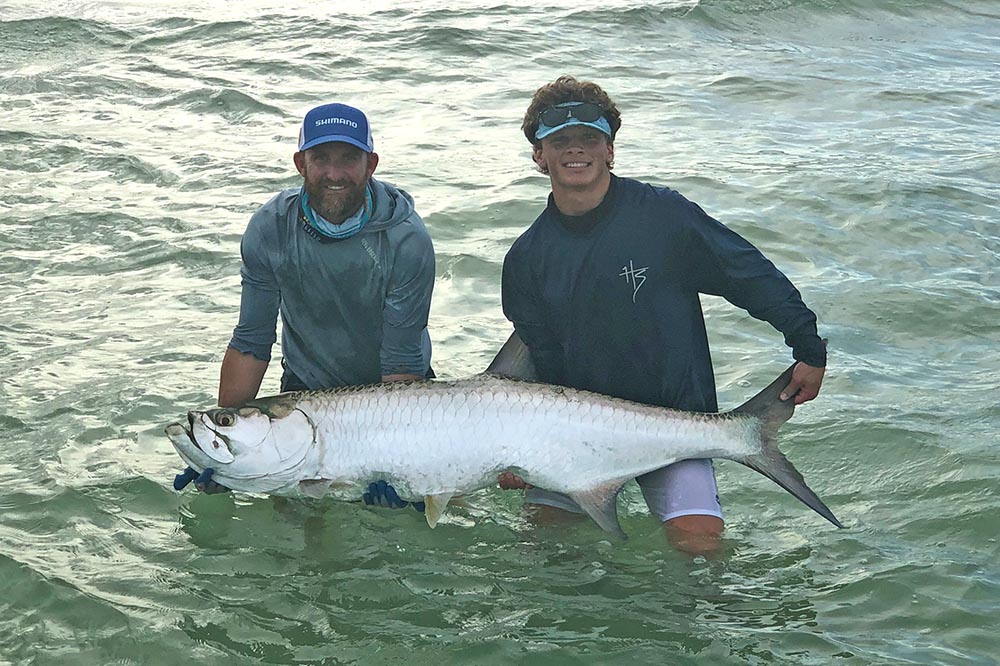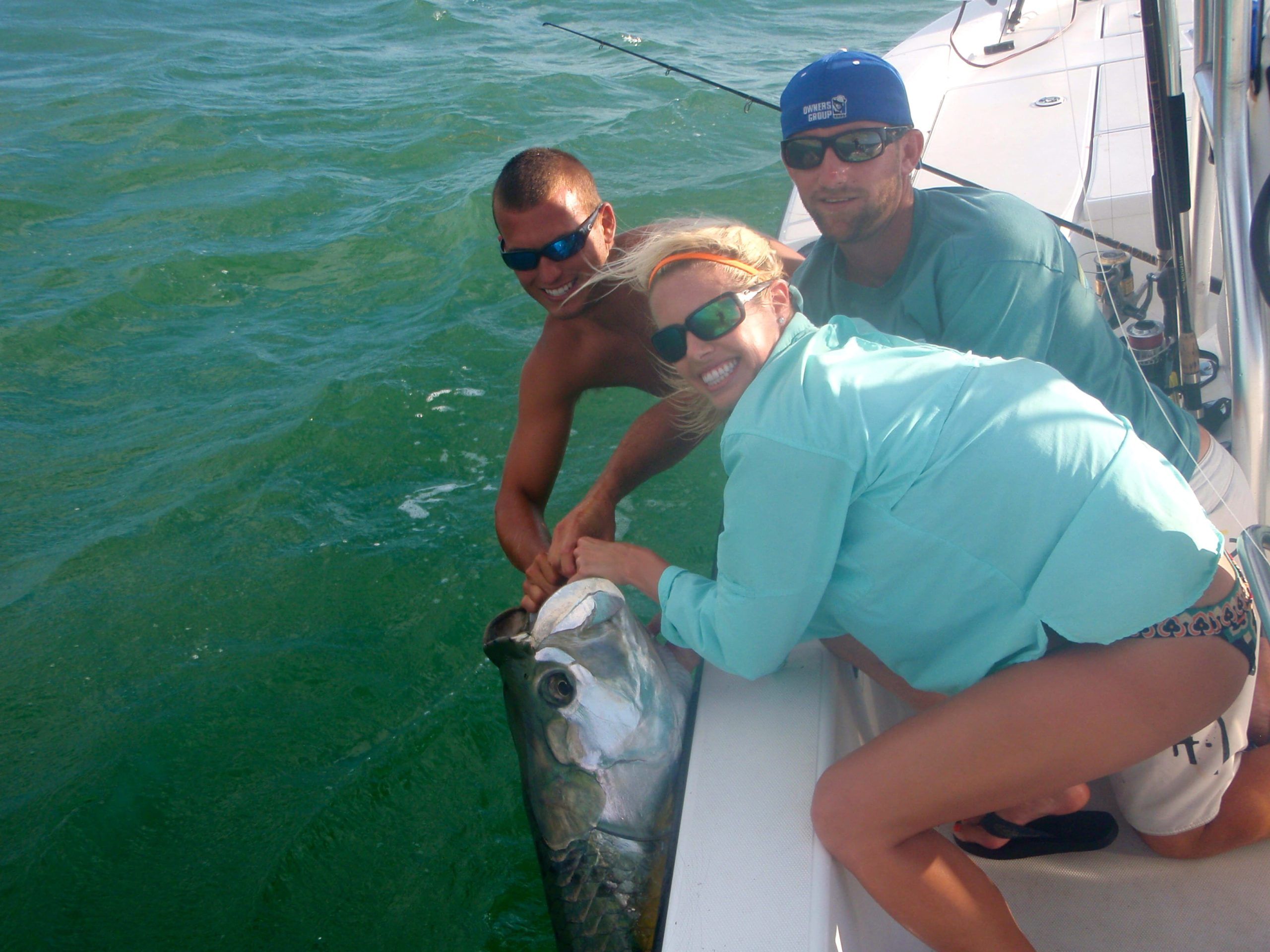Targeting Tarpon in Spring: Saint Petersburg, Florida
Targeting Tarpon in Spring: Saint Petersburg, Florida

Last Updated on March 14, 2024 by Eric
Springtime in Saint Petersburg, Florida, marks a prime season for tarpon fishing. This period sees a significant uptick in the tarpon population along the local beaches, inlets, and passes due to their migratory patterns. For fishermen, both seasoned and new, this means an increased chance of hooking into one of these sought-after game fish. The reason Saint Petersburg stands out as a go-to destination for tarpon fishing during these months isn’t just about the numbers. It’s the environment – warm, inviting waters that become a playground for tarpon seeking to feed and prepare for the spawning season. So, if you’re looking to target tarpon, you’re in the right place at the right time. Here, we’ll guide you through what makes this location and season ideal for landing one of these impressive fish.
Understanding Tarpon Behavior in Spring
In spring, tarpon fishing in Saint Petersburg, Florida, takes on a rhythm of its own, driven largely by the tarpon’s migration and behavior patterns. These fish, known for their size and fighting spirit, make their way to our inshore and nearshore waters as part of an annual migration that coincides with the warming trends of spring. This migration isn’t just random movement; it’s a calculated journey that brings tarpon into areas where food is abundant, and the waters are the right temperature for their activities.
The water temperature plays a crucial role in determining tarpon behavior. As the Gulf waters warm up, typically reaching the mid-70s to low 80s Fahrenheit, tarpon become more active, feeding and moving more frequently. This period is when anglers have the best chance of encountering these fish. Tarpon are sensitive to changes in their environment, so a sudden cold snap or an unseasonably warm spell can affect their presence and behavior significantly.
Another key factor influencing tarpon behavior during spring is the availability of food. Tarpon feed on a variety of prey, including fish and crustaceans, and their migration paths often follow these food sources. This pursuit of food brings them closer to shore, into the inshore flats, back bays, and nearshore waters around Saint Petersburg, creating prime opportunities for anglers.
The behavior of tarpon in spring also includes their well-known acrobatics when hooked. These fish are fighters; they leap out of the water, shake their heads, and do everything they can to throw the hook. Understanding these behaviors is crucial for anglers looking to target tarpon during their spring migration. It’s not just about finding where the fish are but also understanding how they’re likely to react once they’re on the line.
As tarpon migrate through Saint Petersburg’s waters in spring, they bring with them a season of fishing that’s marked by understanding and respecting these magnificent creatures. Knowing their patterns and behaviors not only increases the chance of a successful catch but also ensures that we’re fishing responsibly, keeping the health and sustainability of the tarpon population in mind.
Inshore Fishing for Tarpon
Inshore fishing for tarpon around Saint Petersburg, Florida, is a key part of what makes this area a hotspot for anglers from spring through early summer. When we talk about inshore fishing for these silver kings, we’re looking at targeting them in the flats, backcountry, and around the mouths of rivers and estuaries. These areas offer the kind of shallow, warm waters that tarpon flock to for feeding and spawning during the spring months.
Common inshore locations where you’re likely to find tarpon include the flats around Fort De Soto Park, the mangrove shorelines of Weedon Island Preserve, and the brackish waters of the Tampa Bay estuary system. Each of these spots has its own unique appeal, but they all share one thing in common: they’re prime feeding grounds for tarpon.
Fishing techniques in these inshore waters need to be adapted to the environment. Sight fishing is a popular method, where you literally look for tarpon rolling or feeding on the surface. It requires a quiet approach, often in a kayak or on a flats boat, to get close without spooking the fish. When you spot a tarpon, casting a live bait like a pinfish or mullet in its path can be incredibly effective. It’s about presenting the bait in a natural way that mimics what the tarpon are already feeding on.
Another technique that works well inshore is drift fishing, especially in areas with strong currents like the passes and inlets. Here, you let your bait drift with the current, making it look as enticing as possible to the tarpon moving with the tide. This method can be particularly effective in the early morning or late evening when tarpon are more actively feeding.
The key to successful inshore tarpon fishing is patience and respect for the fish and their habitat. It’s not about the fastest boat or the fanciest gear; it’s about understanding the tarpon’s behavior and being in the right place at the right time. And remember, these are catch-and-release creatures. Proper handling and quick release are crucial to ensure the health and sustainability of the tarpon population for years to come.
Nearshore Fishing for Tarpon
Nearshore fishing for tarpon presents a slightly different set of challenges and opportunities compared to its inshore counterpart. When we talk about nearshore, we’re referring to the waters that lie just beyond the inshore flats and estuaries, typically up to a few miles off the coast. This zone often includes the areas around passes, the mouths of bays, and artificial reefs. It’s where the shallow waters of the inshore merge with the deeper, open waters of the Gulf, creating a unique environment for tarpon.
What sets nearshore fishing apart is the depth and breadth of the water. You’re dealing with a greater range of depths, currents, and potentially even waves. This environment requires a bit more from your boat and gear, as you might be contending with open water conditions. However, the rewards can be substantial. Nearshore waters around Saint Petersburg are known for holding large tarpon, especially during the spring migration when these fish are moving along the coast.
Areas like the shipping channels near Egmont Key and the waters surrounding the Sunshine Skyway Bridge are hotspots for nearshore tarpon fishing. These locations offer deep channels and structure where tarpon congregate, feeding on the abundant baitfish that are drawn to these areas.
Techniques for nearshore tarpon fishing often involve trolling or drifting live baits such as crabs, mullet, or threadfin herring in the paths of migrating tarpon. It’s also common to use larger artificial lures that can cover more water and attract the attention of these powerful fish. The key is to present your bait or lure in a way that matches the natural movements of tarpon prey, making it irresistible to a passing tarpon.
The challenges of nearshore tarpon fishing include dealing with potentially rougher waters and locating fish in a vast environment. Success in this arena comes down to understanding tarpon migration patterns, being able to read the water for signs of fish, and having the patience to wait for the right moment to present your bait. As always, respect for the tarpon and the marine environment is paramount, ensuring these majestic fish continue to thrive for future generations of fishermen to enjoy.
Reading the Water
Reading the water is crucial when fishing for tarpon. Look for rolling fish at the surface, a common sign tarpon are present. These gentle giants need to gulp air, so calm mornings or late evenings are prime times to spot them breaking the surface. Currents play a big role too. Tarpon like to ride and feed in currents, so areas where water moves around structures, like bridges, inlets, or natural channels, are good spots to start.
Notice the baitfish. Tarpon won’t be far from their food source. If you see schools of baitfish, there’s a good chance tarpon are nearby. Also, keep an eye on birds diving into the water; they’re often a sign that baitfish—and thus tarpon—are in the area.
Handling Tarpon
Once you’ve hooked a tarpon, the way you handle it can make a big difference. First, use gear strong enough to handle the fish but aim for a quick release to reduce exhaustion. Keep the tarpon in the water as much as possible; removing them can cause undue stress and harm. If you’re taking a photo, support the fish horizontally and ensure a quick return to the water. Revive the tarpon if necessary by moving it back and forth in the water to ensure it’s ready to swim off strongly. Remember, these practices help maintain the health of the tarpon population for future generations.
Common Mistakes to Avoid
A few common pitfalls can trip up even experienced fishermen. First, underestimating the importance of stealth and silence, especially in shallow waters, can spook tarpon away before you even get a chance. Avoid heavy boat traffic areas when possible, as tarpon are sensitive to noise and disturbances.
Using tackle that’s too light can lead to long fights that exhaust the fish, potentially harming them even if catch and release is practiced. Make sure your gear is appropriate for the size of tarpon you’re targeting.
Lastly, failing to pay attention to local fishing reports or not spending enough time observing water conditions can leave you fishing blind. Knowledge of where the tarpon are biting and understanding the daily patterns can be the difference between a successful outing and coming up empty.
Your Next Step Towards Tarpon Fishing Success
As we’ve navigated through the ins and outs of targeting tarpon in the vibrant waters of Saint Petersburg, Florida, the key takeaway is the blend of respect for these majestic fish and the environment they thrive in. Remember, understanding tarpon behavior, choosing the right fishing spots, and handling these creatures with care not only enhances your fishing experience but also ensures that future generations can enjoy the same thrill.
Rock Bottom Sports Fishing is here to guide you through this adventure with expert knowledge and top-notch equipment. We’re not just about fishing; we’re about creating memorable experiences while upholding the highest standards of sportsmanship and conservation.
If you’re ready to put these tips into action and experience the best of tarpon fishing, it’s time to get in touch with Rock Bottom Sports Fishing. Let’s make your fishing aspirations a reality, respecting the waters we love so much. Book your trip today and join us in the pursuit of the mighty tarpon in Saint Petersburg’s beautiful waters.



